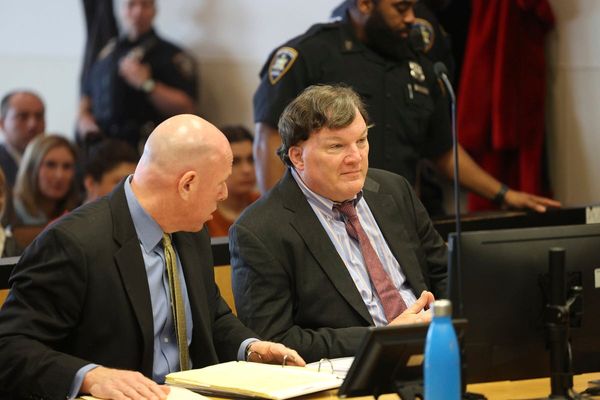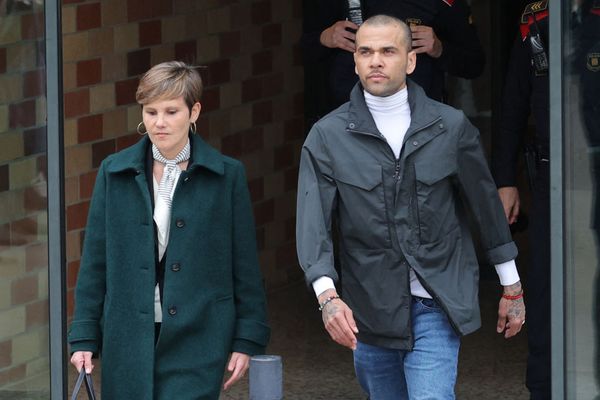
Wearing a helmet or soft headgear does not protect against concussions, according to experts who are calling for greater public awareness around the issue.
It comes ahead of a public hearing of the Senate inquiry into concussions and repeated head trauma in contact sports, to be held in Melbourne on Wednesday.
Repeated studies have shown that headgear being able to protect players from concussions in contact sport is a myth.
As far back as 2005, a study of 304 rugby union players in New Zealand found “the risk of concussion was not lessened by the use of padded headgear or mouthguards”.
Research into padded headgear in 400 junior AFL players, published last April, found that “headgear use was not associated with reduced risk of suspected sports-related concussion”.
The findings, according to a review, correspond to lab testing which has suggested that padded headgear is “unable to absorb additional force well below the threshold at which concussions occur”.
Neither are hard helmets, such as those worn by American football players, protective against concussion.
“A helmet can protect the skull bone from fracturing,” said Prof Alan Pearce, a neurophysiologist and concussion researcher at La Trobe University. “But it doesn’t stop the brain tissue from moving inside the skull – and that’s the issue.”
The brain is suspended in a bath of clear fluid known as cerebrospinal fluid. It acts, to a certain extent, as a shock absorber.
Concussions occur when external forces act upon the brain, resulting in it moving inside the skull cavity and either directly hitting the inside of the skull or stretching and twisting.
Pearce, who will testify at the Senate hearing, likens the consistency of the brain to congealed jelly. “It’s kind of solid but you could squeeze your brain through your fingers, that’s how delicate the tissue is,” he said.
“When you’re looking at 120kg blokes hitting each other at 35km per hour, the cerebrospinal fluid doesn’t actually protect the brain, it makes it more likely that the brain will move in the skull.
“The fact that you’re getting exposed to multiple repetitive impacts over a playing career increases the risk of CTE [chronic traumatic encephalopathy] developing.
“Helmets are not going to protect against these micro impacts – we’re talking about 20, 30, 40,000 impacts over a career.”
Some manufacturers have developed newer helmet designs which purport to reduce the forces acting on the brain, but there is still no strong evidence to support their efficacy.
Both linear forces (as in rugby, where players collide straight on) and rotational forces (where players are tackled from the side, such as in AFL) can result in concussion.
Rotational forces result in “stretching but also shearing of brain cells, and it’s the shearing that causes the damage”, Pearce said. “What we find is that linear directions actually result in less concussion than, say, a player coming in from the side.”
Associate Prof Frances Corrigan of the University of Adelaide said: “You don’t even need to technically have a head impact to cause this sort of stretching. If you’re thinking about things like a car accident, if you move the head fast enough it will cause the stretching.
“Headgear, unfortunately, isn’t going to do anything about the movement of the brain.”
Last month, some Sydney junior rugby league clubs announced they would issue free headgear to children as an incentive for “tackle-happy kids”. The president of the Sydney eastern suburbs district junior rugby league, Bob Tate, claimed to the Daily Telegraph that headgear amounted to “an extra layer of protection that might make the game a little bit safer for their little ones”.
But experts say the best way of making young players safer is to modify sports in childhood to be non-contact.
“[CTE] is a preventable environmental disease of exposure,” Pearce said. “The answer is actually reducing exposure. So don’t just pad our kids up in helmets and whatnot – let’s actually modify the sports until the age of 14 to reduce that exposure for the first say, eight or nine years.”
Corrigan agreed, saying: “It’s not to say that kids shouldn’t be involved in sport, but it’s just being mindful about modifying … that involvement.”
She refuted the idea “that if you put someone in soft headgear that that means that they will be protected”.
“Obviously there are better ways to manage the risk, in terms of modifying the game … to try and decrease the risk of the head injury occurring in the first place,” she said.







